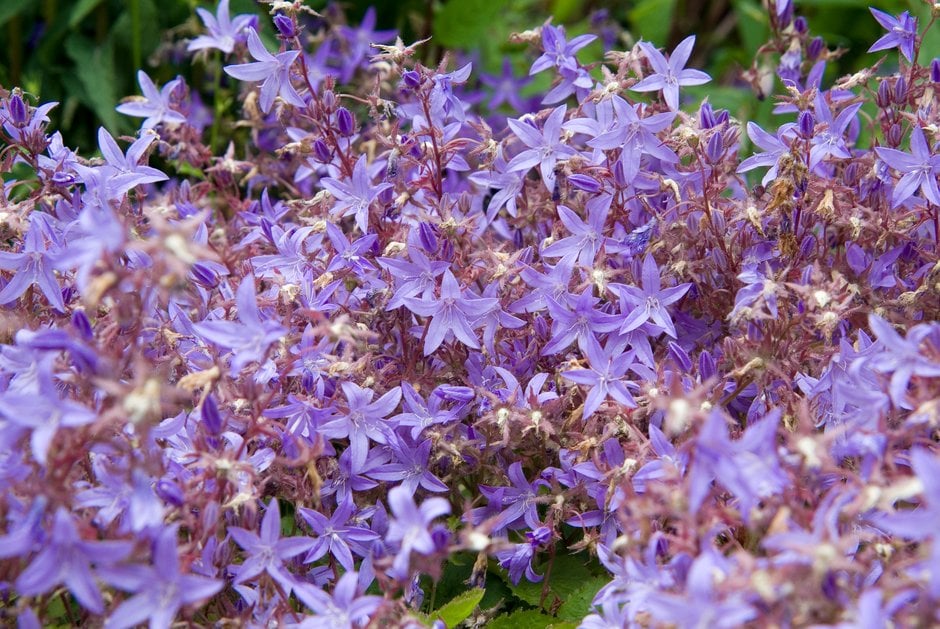Campanula fenestrellata
Adriatic bellflower
A compact, evergreen perennial to approximately 15cm tall forming a low mound of ovate to heart-shaped, hairy, toothed leaves covered with star-shaped blue to violet-blue flowers in summer

Buy this plant
Size
Ultimate height
0.1–0.5 metresTime to ultimate height
2–5 yearsUltimate spread
0.1–0.5 metresGrowing conditions
Moisture
Moist but well–drained, Well–drainedpH
Acid, Alkaline, NeutralColour & scent
| Stem | Flower | Foliage | Fruit | |
| Spring | Green | |||
|---|---|---|---|---|
| Summer | Blue Purple | Green | ||
| Autumn | Green | |||
| Winter | Green |
Position
- Full sun
- Partial shade
Aspect
North–facing or East–facing or South–facing or West–facing
Exposure
Exposed or Sheltered Hardiness
H5Botanical details
- Family
- Campanulaceae
- Native to GB / Ireland
- No
- Foliage
- Evergreen
- Habit
- Matforming
- Genus
Campanula may be annuals, herbaceous or evergreen perennials, with bell or star-shaped, often blue, flowers in late spring or summer
- Name status
Correct
- Plant range
- Balkans
How to grow
Cultivation
Grows best in moist but well-drained soil in a sunny position. Ideal for rock gardens, borders, or containers
Propagation
Propagate by seed, division or basal cuttings
Suggested planting locations and garden types
- Patio and container plants
- City and courtyard gardens
- Cottage and informal garden
- Gravel garden
- Rock garden
- Ground cover
- Underplanting of roses and shrubs
- Flower borders and beds
- Garden edging
Pruning
No pruning required
Pests
Diseases
May be susceptible to a rust, powdery mildews and a leaf spot
Get involved
The Royal Horticultural Society is the UK’s leading gardening charity. We aim to enrich everyone’s life through plants, and make the UK a greener and more beautiful place.